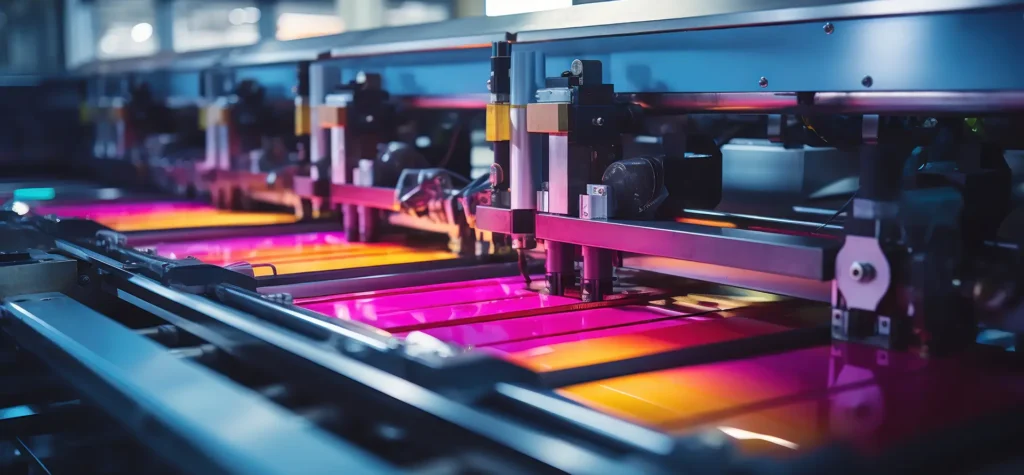Digital and offset printing are two prevalent methods in the printing industry, each with distinct processes and advantages.
Digital printing involves directly transferring a digital image onto various media, such as paper, canvas, or fabric. It uses digital files like PDFs, and the image is sent directly to the printer. There are two main types of digital printing:
Inkjet Printing:
- Technology: Sprays tiny droplets of ink onto the paper.
- Uses: Commonly used for printing photos, banners, and short-run books.
Laser Printing:
- Technology: Uses a laser beam to produce an image on a drum, which is then transferred to paper using toner (powder).
- Uses: Often used for documents, brochures, and short-run marketing materials.
Advantages of Digital Printing
- Cost-effective for Short Runs: Ideal for small quantities.
- Quick Turnaround: Minimal setup time.
- Customization: Easy to personalize each piece (e.g., variable data printing for direct mail campaigns).
- Less Waste: Direct printing process reduces waste.
Disadvantages of Digital Printing
- Cost: More expensive per unit for large runs compared to offset printing.
- Quality: May not match the fine detail or color accuracy of offset printing for certain high-quality projects.
Offset printing, also known as offset lithography, is a traditional printing method where the image is transferred (or “offset”) from a plate to a rubber blanket, and then to the printing surface. It is widely used for high-volume printing.
Sheet-Fed Offset Printing:
- Technology: Feeds individual sheets of paper into the press.
- Uses: Used for books, brochures, and higher-quality printing needs.
Web Offset Printing:
- Technology: Uses large rolls of paper, suitable for long runs.
- Uses: Newspapers, magazines, and catalogs.
Advantages of Offset Printing
- Cost-effective for Large Runs: Lower per-unit cost for high-volume jobs.
- High Quality: Superior image quality, sharpness, and color fidelity.
- Versatility: Can print on a wide range of materials and sizes.
Disadvantages of Offset Printing
- Setup Time and Cost: Requires more setup time and higher initial costs.
- Longer Turnaround: Not as fast as digital printing for short runs.
- Less Flexibility: Less cost-effective for short runs and limited in customization.
Choosing Between Digital and Offset Printing
- Quantity: For small quantities, digital printing is more cost-effective. For large quantities, offset printing becomes more economical.
- Turnaround Time: Digital printing offers faster turnaround times for small to medium runs.
- Customization: Digital printing is better for projects requiring variable data or personalized items.
- Quality: For high-quality print jobs, especially those requiring precise color matching and fine detail, offset printing is typically preferred.
In summary, the choice between digital and offset printing depends on factors like project size, budget, timeline, and specific quality requirements.
